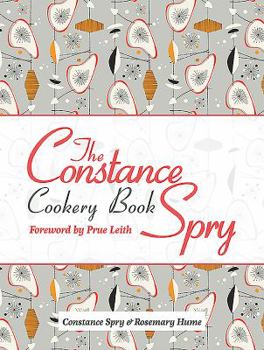The Constance Spry Cookery Book
Select Format
Select Condition 
Book Overview
The Constance Spry Cookery Book is one of the best known cookery books of all time. It is one of the kitchen bibles, worshipped by millions. This essential addition to any kitchen has withstood the test of time and become an invaluable source of information for every enthusiastic cook. Known for its authoritative and comprehensive collection of recipes, it has now been brought up to date in a beautiful new metricated edition containing specially commissioned how-to line drawings.
Published in 1956, when both Constance Spry and Rosemary Hume were among the greatest names in cookery writing, it took three years to produce. Their aim was to offer a supremely practical book with chapters covering kitchen processes, soups and sauces, through vegetables, meat, poultry and game to cold dishes and pastry making. In fact everything every cook, or aspiring cook, would need to know. That the book has been so popular for over half a century is a true testament to how successfully they achieved their aim.
The Constance Spry Cookbook is now an established classic (and much requested on wedding gift lists) and a timeless treasure which stands the test of time, and is perhaps even more needed today when so many people have not been taught to cook by mothers or at school.
Published in 1956, when both Constance Spry and Rosemary Hume were among the greatest names in cookery writing, it took three years to produce. Their aim was to offer a supremely practical book with chapters covering kitchen processes, soups and sauces, through vegetables, meat, poultry and game to cold dishes and pastry making. In fact everything every cook, or aspiring cook, would need to know. That the book has been so popular for over half a century is a true testament to how successfully they achieved their aim.
The Constance Spry Cookbook is now an established classic (and much requested on wedding gift lists) and a timeless treasure which stands the test of time, and is perhaps even more needed today when so many people have not been taught to cook by mothers or at school.
Format:Paperback
Language:English
ISBN:013603912X
ISBN13:9780136039129
Release Date:October 2008
Publisher:Pearson Education
Length:670 Pages
Weight:4.55 lbs.
Dimensions:1.3" x 8.6" x 11.4"
Customer Reviews
5 customer ratings | 5 reviews
There are currently no reviews. Be the first to review this work.





















